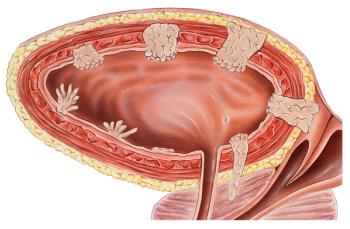
Study Identifies Gaps in Clinical Trials for Chemotherapy-Induced Peripheral Neuropathy
Researchers found that little of the mechanistic understanding of CIPN is currently being translated into clinical trials for interventions.
According to a review published in Cancer, though there is a growing understanding of the mechanisms for the development of chemotherapy-induced peripheral neuropathy (CIPN), little of that understanding is currently being translated into clinical trials for interventions.
“Through the NCI Community Clinical Oncology Program experience from 1995 through 2011, empirically identified interventions were not found to result in successful interventions to mitigate CIPN, which is a significantly debilitating adverse effect of cancer treatment,” the authors wrote.
To understand the extent to which mechanistic understanding of CIPN is being translated into the development of interventions, the NCI conducted a review of the National Institutes of Health (NIH)’s portfolio of investigator-initiated grants, the literature regarding CIPN mechanisms, and the clinical trials listed in the ClinicalTrials.gov database from January 1, 2011 to May 22, 2019.
In total, 69 NIH-supported grants and 95 published articles were identified that evaluated mechanistic pathways of 7 different chemotherapy agents that cause CIPN. Moreover, the review also identified 35 clinical trials that investigated agents or devices that could be used to treat CIPN.
Ultimately, though 10 of the trials mentioned a mechanism of action in their abstracts, only 3 trials incorporated a mechanistic rationale to support the choice of the intervention. According to researchers, this suggests that a limited amount of the mechanistic understanding of CIPN is being translated into the development of possible interventions.
“This suggests that a limited amount of the mechanistic understanding of CIPN is being translated into the development of potential interventions,” the authors explained. “Translational endpoints to confirm the mechanisms rarely are included in the clinical trials.”
As part of the review, researchers also specifically examined genome-wide association studies. To date, 24 published studies have evaluated several single-nucleotide polymorphisms in a wide variety of genes with different functions, whether specific to neuronal function, drug metabolism, or risk of the development of cancer. Within these studies, a few variants were found to be associated with an increased risk of developing CIPN, but the findings were not consistent across studies and no confirmatory studies were identified. Nonetheless though, researchers indicated these studies have still helped to identify novel pathways for mechanistic studies of CIPN.
Importantly, in order to bridge this critical gap, the National Cancer Institute (NCI) has released a funding opportunity seeking research projects to address chronic adverse sequelae from cancer treatment through clinical phenotyping and, when appropriate, correlation with translational endpoints. Further, the announcement included mechanistic studies with translational endpoints and/or longitudinal clinical phenotyping to recognize and verify future endpoints for use in clinical trials that will evaluate the efficacy of interventions designed to prevent or diminish the identified adverse sequelae.
“It is hoped that the newly released funding opportunity as well as the current review will incentivize investigators to bridge the gap between preclinical and clinical research and improve the ability to develop successful interventions to mitigate CIPN,” the authors concluded.
Reference:
St. Germain DC, O’Mara AM, Robinson JL, Torres AD, Minasian LM. Chemotherapy-Induced Peripheral Neuropathy: Identifying the Research Gaps and Associated Changes to Clinical Trial Design. Cancer. doi: 10.1002/cncr.33108
Newsletter
Stay up to date on recent advances in the multidisciplinary approach to cancer.


























































































